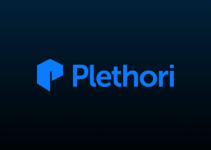Ethereum itself has been criticized for its low efficiency and high Gas Fees. As Ethereum becomes more and more popular, its users and applications continue to increase. The entry of funds and traffic puts forward higher requirements for Ethereum. At the same time, the rise of new public chains is also acquiring a large amount of traffic and users from Ethereum. The above factors make the upgrade of Ethereum and Ethereum 2.0 creation urgent.
Introduction to Ethereum 2.0
Ethereum 2.0, also known as Serenity or ETH2.0, aims to solve the scalability and security problems of the current Ethereum network. The ETH2.0 testnet was launched at the end of April 2020, and the ETH2.0 mainnet was officially launched in December 2020. Since then, the era of Ethereum 2.0 has officially arrived.

Ethereum 2.0 is divided into the following three phases:
| Stage | Name | Time | Problem Solved |
| First Stage | Beacon Chain | December 1, 2020, Online | A blockchain independent of the Ethereum mainnet |
| Second Stage | The Merge | Expected in the first or second quarter of 2022 | Merge the beacon chain with the Ethereum mainnet |
| Third Stage | Shard Chain | Expected in 2022, undetermined specific date | Play a key role in scaling the Ethereum network |
Beacon Chain: Beacon Chain was introduced to synchronize all shard chains and provide consensus for all shard chains. This is a key component and was introduced by Serenity to ensure information sharing between shard chains.
Shard Chain: In Ethereum, anyone who wants to evaluate the Ethereum network has to go through a node. A node is a copy of the entire network to perform some function. Shard chains contain only a specific part of the blockchain, reducing the amount of data that nodes have to manage, leading to higher efficiency.
Ethereum 2.0 vs Ethereum 1.0
- From Proof of Work (PoW) to Proof of Stake (PoS)
The Ethereum consensus mechanism is Proof of Work, while Ethereum 2.0 will use Proof of Stake. Proof of Work (PoW) in Ethereum aims to reward miners for creating and validating blocks on the blockchain. However, such a mechanism limits its scalability because as the blockchain grows, it requires more constant computing power. Proof of Stake (PoS) was introduced to bring in more validators, i.e. anyone with at least 32 ETH can get paid for validating and confirming transactions.
The advantage of PoS is that it is more energy-efficient than PoW, decoupling energy-intensive computer tasks from the consensus algorithm. This also means that you don’t need a lot of computing power to keep the blockchain secure.
- Ethereum 2.0 has better scalability
Ethereum has always been known as the king of the public chain. Many popular projects are running on the Ethereum public chain, such as DeFi in the summer of 2020, and NFT & DAOs in 2021. However, Ethereum network congestion and high gas fees have been criticized by users. The reason is that in Ethereum 1.0, the network can only support around 30 transactions per second, which causes delays and congestion. Ethereum 2.0 achieves up to 100,000 transactions per second by implementing shard chains to solve the problem of scalability.
- Ethereum 2.0 will be more secure
The planning of Ethereum 2.0 also takes security into account. At least 16,384 validators are required to deposit ETH on Ethereum 2.0, which makes it more decentralized and secure. At the same time, the Ethereum Foundation has established a dedicated security team to serve Ethereum 2.0 and detect possible network security problems in cryptocurrencies.
Pros and Cons of Ethereum 2.0
Ethereum 2.0 provides a better and more efficient way to develop applications on more secure “shards”. This increases its scalability as the PoS system allows more validators, increasing the speed of all transactions. With more validators, the gas fee will be more stable and thus more economically sustainable.
Having said that, the timeline for Ethereum 2.0 to become fully operational remains unclear. With this uncertainty, betting on Ethereum becomes less attractive as funds can only come in before Phase 1.5 kicks off. The Ethereum team has delayed the launch of Phase 0 several times. Similar delays in other stages are also likely.
Conclusion
Ethereum 2.0 upgrades the PoS mechanism and makes in-depth references to data sharding. It is believed that it will attract more projects and users, and sit firmly on the throne of the king of the public chain. However, the PoW consensus mechanism ecology of ETH1.0 has formed a large system, accumulated a large number of native users and excellent development teams, and will continue to exist on ETH1.0.
Keep Yourself Updated With The Crypto Trend
Check out all of the listings in the Innovation and Assessment zones as well as the major tokens in the Main Zone – we have more amazing projects to come! What’s more, MEXC lists moonshots and offers access to trade major cryptocurrencies. Visit the Hot Projects section as well to uncover more featured popular tokens. Lastly, feel free to visit MEXC Academy to learn more about cryptocurrency!
Join MEXC and Get up to $10,000 Bonus!
Sign Up

